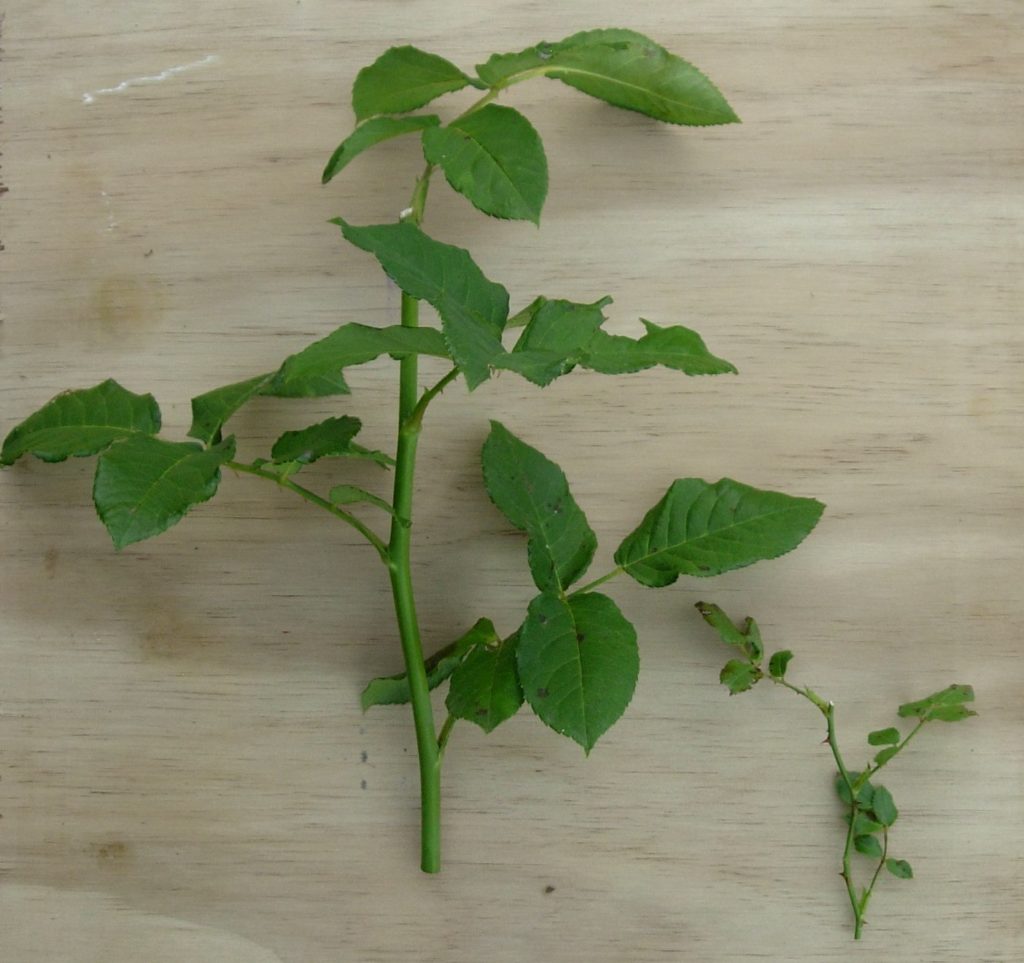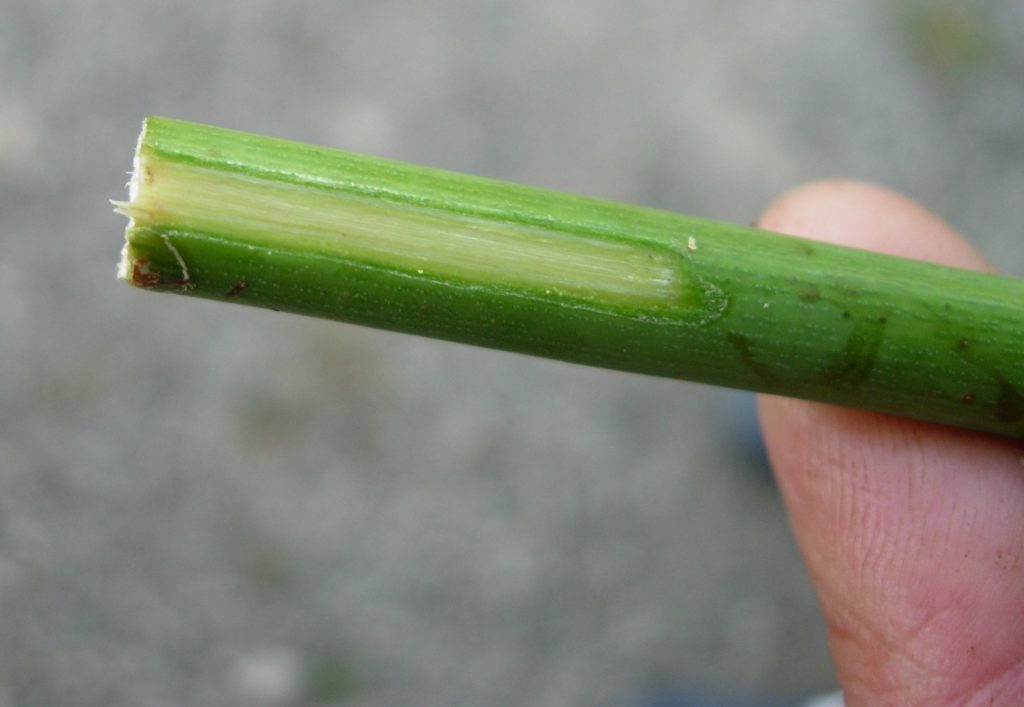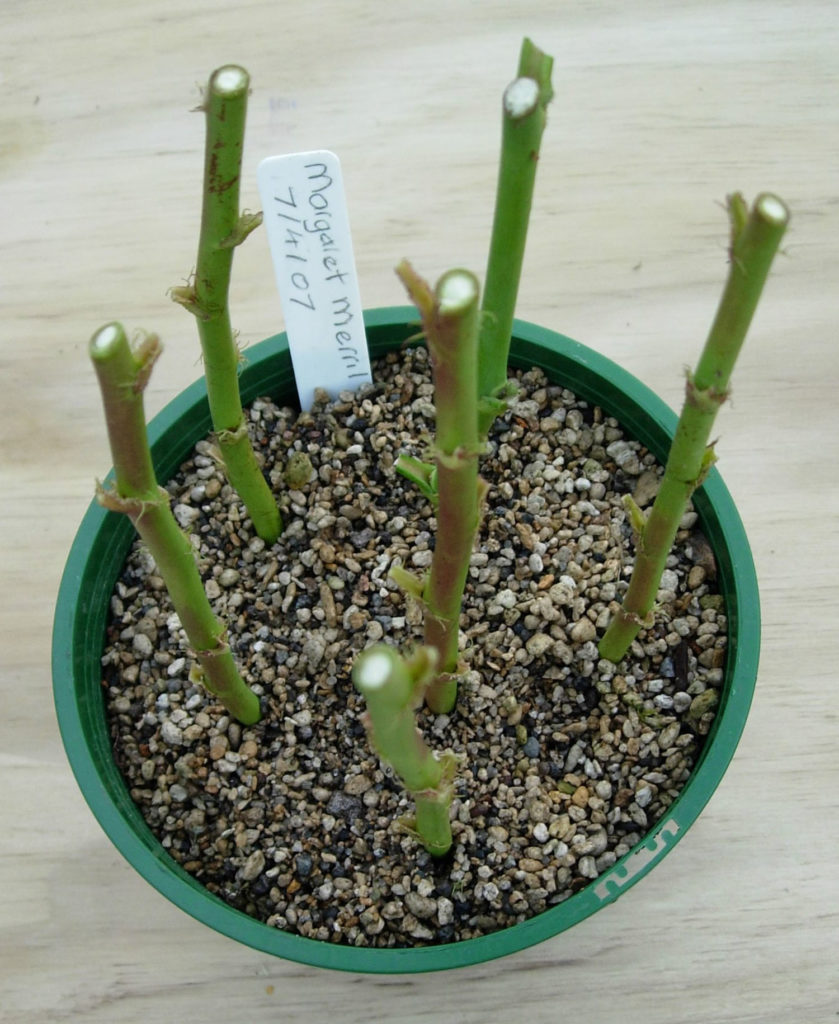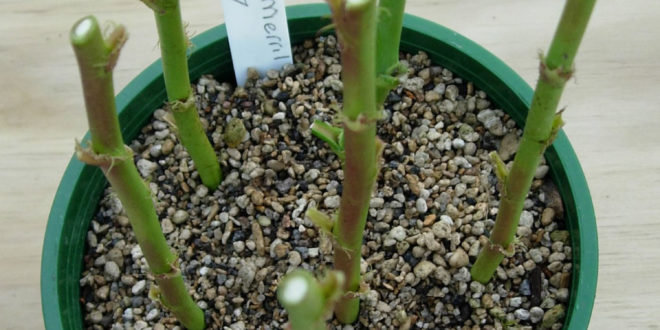Autumn is a great time to take cuttings of roses, which is a cheap and easy way to increase your number of rose plants. Many varieties are easy to grow from cutting although some are harder. There are lots of different techniques described in books and online, and rose enthusiasts all have their own tips and tricks so often it is a case of finding whatever works for you and sticking with it.
It is import to select the right stems for your cuttings. They should be of current season’s growth which has just flowered. It should be about the thickness of a pencil although, for many minis, the stems will be much thinner. There is no ideal length that cutting should be, but they should have 3 or 4 growth buds or eyes, preferably with leaves attached.

Use sharp secateurs to take your cuttings, making a slanted cut above the top bud (just like you do when pruning in winter) and a flat cut below the bottom bud. It is best if you can plant your cuttings straight away but you can keep them for a few days by wrapping them up in a damp paper towel and putting them in the refrigerator.
Before planting, there are several things you can do to give your cuttings the best possible chance of growing. As you will see throughout this article, the main reason for cuttings failing to grow is of a lack of water, so remove all foliage except for the leaf at the top of the cutting and trim this back to the two bottom leaflets. Do not remove any thorns from the cutting as leaving them on reduces water loss from the cutting.
The next thing you can do is wound your cuttings at the base by taking your secateurs or a sharp knife and strip off the bottom 1 – 2cm of skin to expose a paler green surface. The reason why this is done to expose more of the cambium layer from which roots will grow. Also remove the lower bud, as this will prevent any growth coming from below.

You can also apply rooting hormone, such as Seradix to the base of the cutting to hasten the formation of roots, although I have read that the difference is not much. If you don’t have any rooting hormone, then try dipping the end of your cutting in honey, icing sugar or aloe vera.
Cuttings can be planted either into pots or directly into your garden. When planting into the garden, choose a spot that is free draining, out of direct sunlight and is sheltered from the wind. Add some sand to the bottom of your trench before planting the cuttings to assist with drainage.
If you are using pots, make sure they are clean and have holes in the bottom. Fill them with a mixture of equal parts peat and river sand or pumice. Do not add fertiliser as this discourages root formation – we want roots to go out looking for food.
Plant your cuttings so that one of the middle buds is at soil level, firm around them and water in well. Place your pots somewhere out of direct sunlight and sheltered from strong winds, preferably somewhere where they won’t be forgotten!
Write a label with the name or flower colour/type and the date, china graph/wax pencils work best as they won’t fade like marker pens.

As I pointed out earlier, the main reason why cuttings fail to grow is because of a lack of water so they need to be kept moist at all times. You can also put a plastic bag over the top of the pot, making sure it doesn’t touch the cuttings, to maintain high humidity.
Cuttings can take anywhere from 3 weeks to 3 months or even longer to form roots so don’t keep pulling them up to see if there are any roots. Any roots that are emerging are very fragile at first and are easily damaged by doing this. The presence of top growth doesn’t necessarily mean that there are roots as well
Once your cutting has formed roots, you can transplant them into a bigger pot or straight into the garden. Again, keep them moist for the first week or so.
Good luck with growing roses by cuttings.
In the Rose Garden for April
- Test the pH of your soil. It should be around 6 – 6.5 or slightly acidic.
- Prepare new areas for plantings. Dig over and add compost ready for winter planting. If planting where roses have been before, swap the soil for that in another part of the garden.
- Order new seasons roses for winter planting from garden centres and rose nurseries.
- It’s still a good time to take cuttings of roses.
- If the autumn rain has not arrived, keep watering your roses but do not dead head now.
By Hayden Foulds
Hayden also serves as Deputy Chairman of the World Federation of Rose Societies Rose Trials Committee amongst other rose endeavours.










Join the Discussion
Type out your comment here:
You must be logged in to post a comment.